-
1 of 253523 objects
Shahnamah شاهنامه (The Book of Kings) 1648
Manuscript on paper written in black and coloured inks. Illustrations and illuminations in opaque watercolour and metallic paints. | 45.5 x 29.5 x 12.6 cm (book measurement (conservation)) | RCIN 1005014
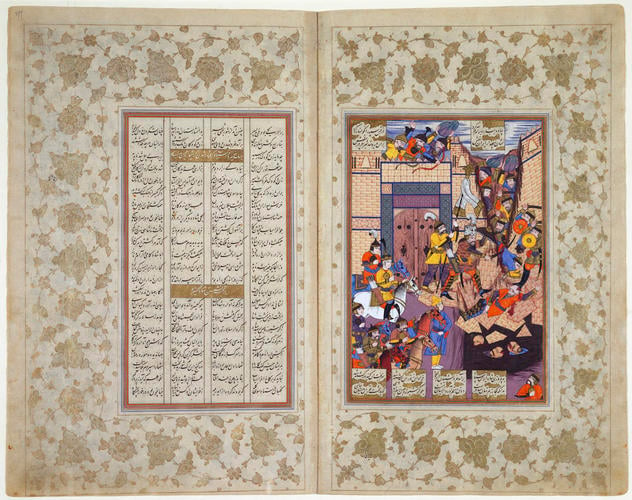
Firdawsi (940-1020)
Master: Shahnamah شاهنامه (The Book of Kings) Item: Rustam and the Persians attack the fortress of Gang Bihisht 1648
Firdawsi (940-1020)
Shahnamah شاهنامه (The Book of Kings) 1648
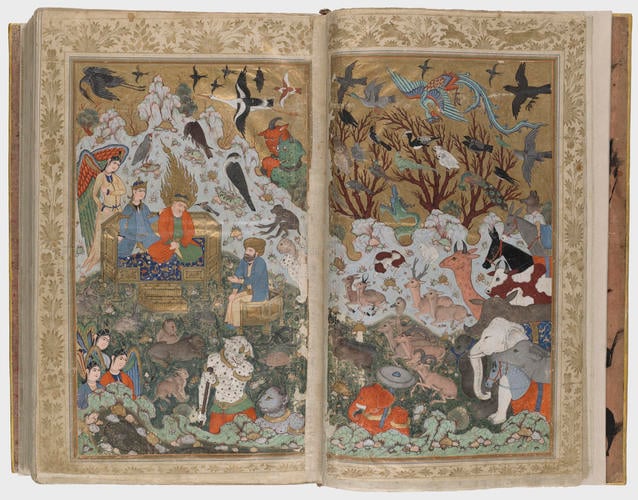
Firdawsi (940-1020)
Master: Shahnamah شاهنامه (The Book of Kings) Item: Soloman (Sulayman) and the Queen of Sheba (Bilqis) enthroned together attended by angels, demons, animals, birds, and Asaf the vizier 1648
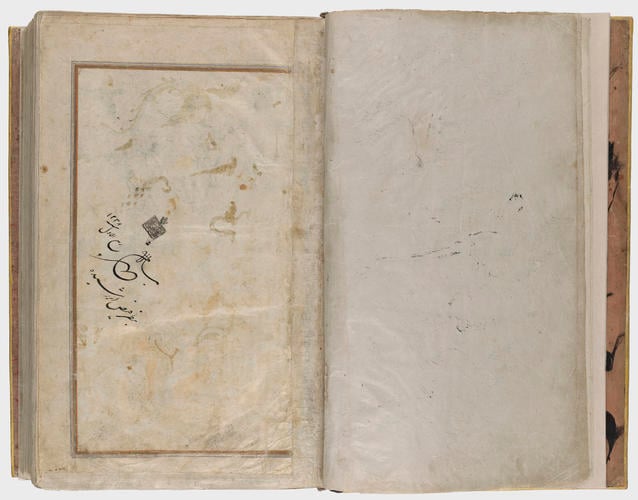
Firdawsi (940-1020)
Shahnamah شاهنامه (The Book of Kings) 1648
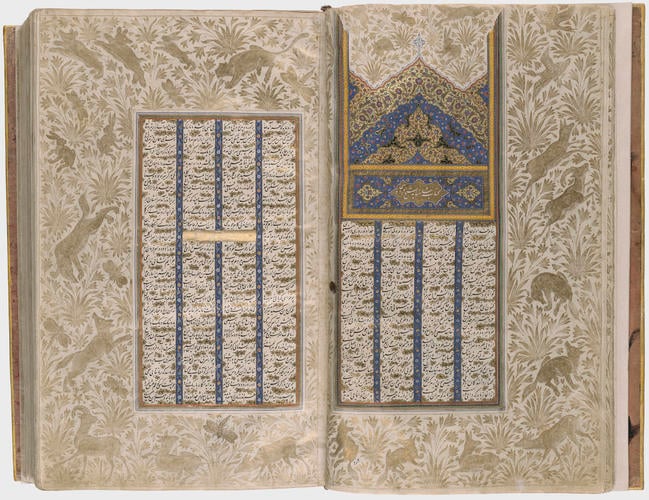
Firdawsi (940-1020)
Shahnamah شاهنامه (The Book of Kings) 1648
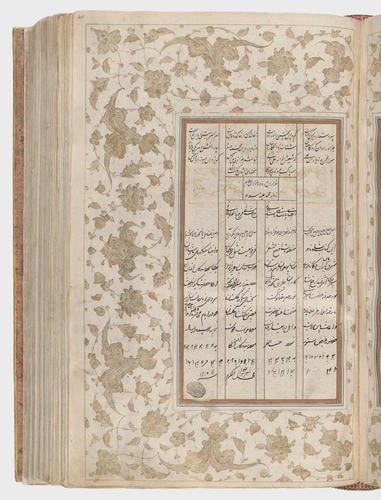
Firdawsi (940-1020)
Shahnamah شاهنامه (The Book of Kings) 1648
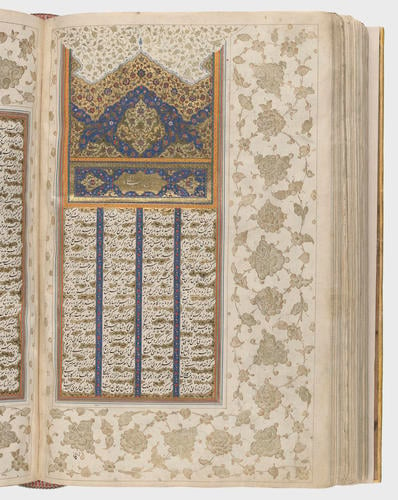
Firdawsi (940-1020)
Shahnamah شاهنامه (The Book of Kings) 1648

Firdawsi (940-1020)
Shahnamah شاهنامه (The Book of Kings) 1648
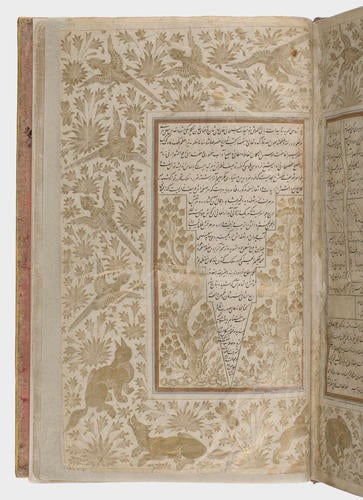
Firdawsi (940-1020)
Shahnamah شاهنامه (The Book of Kings) 1648
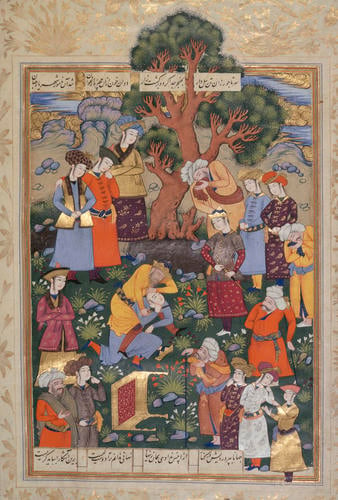
Firdawsi (940-1020)
Master: Shahnamah شاهنامه (The Book of Kings) Item: The murder of Iraj by his brothers Salm and Tur 1648

Firdawsi (940-1020)
Shahnamah شاهنامه (The Book of Kings) 1648
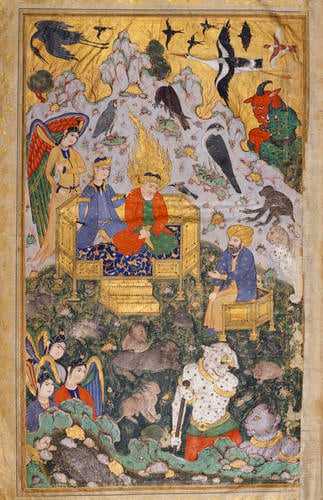
Firdawsi (940-1020)
Master: Shahnamah شاهنامه (The Book of Kings) Item: Soloman (Sulayman) and the Queen of Sheba (Bilqis) enthroned together attended by angels, demons, animals, birds, and Asaf the vizier 1648
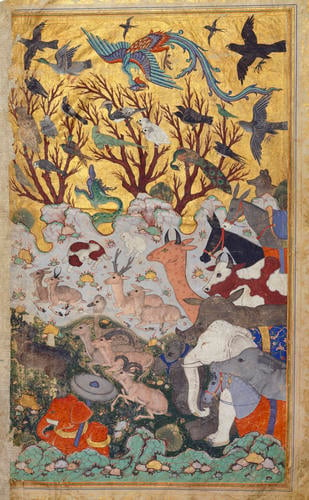
Firdawsi (940-1020)
Master: Shahnamah شاهنامه (The Book of Kings) Item: Soloman (Sulayman) and the Queen of Sheba (Bilqis) enthroned together attended by angels, demons, animals, birds, and Asaf the vizier 1648

Firdawsi (940-1020)
Master: Shahnamah شاهنامه (The Book of Kings) Item: Zahhak chained by Faridun in a cave on Mount Damavand 1648
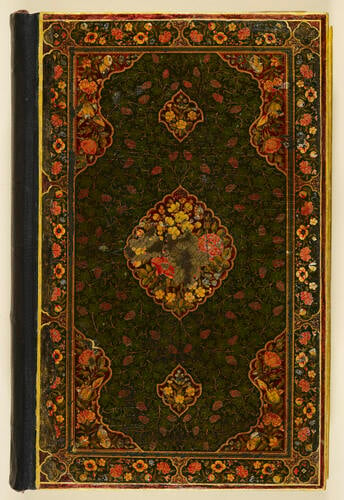
Firdawsi (940-1020)
Shahnamah شاهنامه (The Book of Kings) 1648
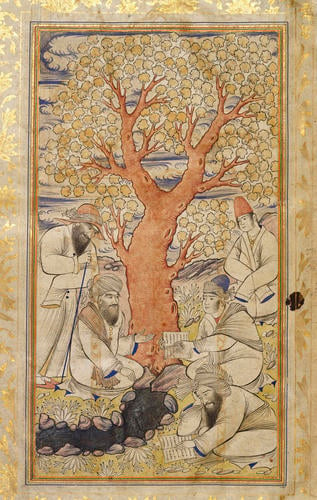
Firdawsi (940-1020)
Master: Shahnamah شاهنامه (The Book of Kings) Item: Firdawsi and the three Ghaznavid court poets 1648

Firdawsi (940-1020)
Master: Shahnamah شاهنامه (The Book of Kings) Item: Firdawsi and the three Ghaznavid court poets 1648


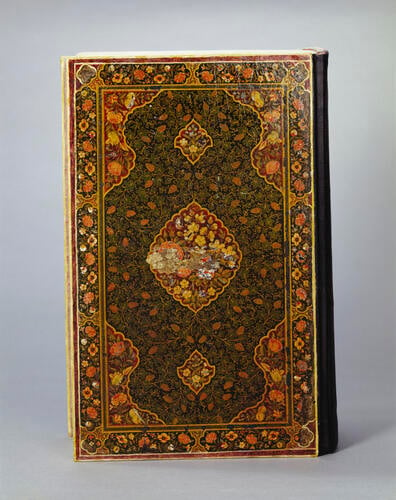

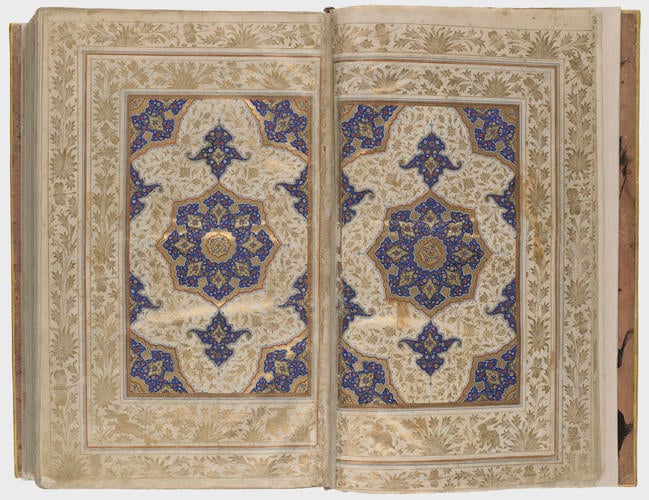
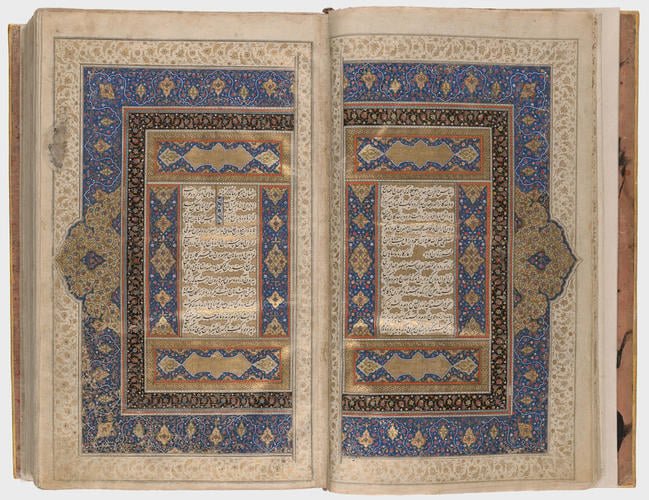








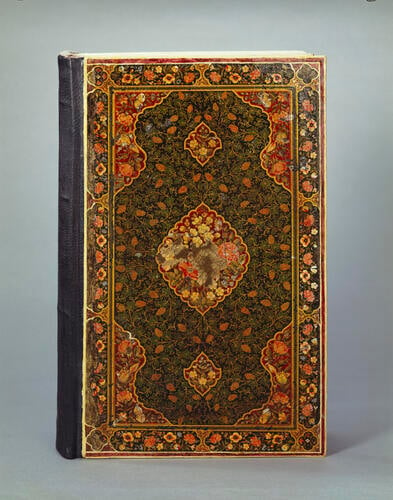






-
A large seventeenth-century Safavid illustrated and illuminated manuscript of the Shahnamah presented to Queen Victoria by Kamran Shah of Herat in 1839.
The Shahnamah is the longest poem ever written by a single author, comprising fifty thousand rhyming couplets. It is an epic chronicle of fifty pre-Islamic and legendary Persian kings up to the fall of the Sasanian Empire in the 7th century which the poet, Hakim Abul-Qasim Firdawsii of Tus (c.940 - 1020), spent more than 25 years writing. This copy contains the so-called Baysunguri preface (ff.7v-14v), allegedly written by the 15th century Timruid Prince Baysungur for his illuminated copy of the Shahnamah. It also features the Barzunamah, a post-Shahnamah epic poem.
This volume is one of several large illustrated Shahnamah manuscripts made in Persia in the 17th century for wealthy noble (as opposed to royal) patrons. The long colophon (ff.752v-753r) states that the text was copied by the calligrapher Muhammad Hakim al-Husayni for the exalted nobleman Qarajaghay Khan, and that the work was carried out in his library, completed April/May 1648. Qarajaghay Khan was the Governor of Mashhad under Shah Abbas II, based in the holy city of Mashhad where it is assumed this manuscript was made.
The manuscript’s pages are richly decorated and illuminated throughout with wide paper margins covered with designs of animals, trees, birds, and arabesques (all by anonymous artists).
The book opens with a double page illustrated frontispiece (ff. 5v-6r) depicting Soloman (Sulayman) and the Queen of Sheba (Bilqis) enthroned together attended by angels, demons, animals, birds, and Asaf the Vizier. This theme was a popular subject for Shahnamah frontispieces, celebrating Solomon’s status as a great king as well as a prophet. On the front of the throne is the signature of the artist Malik Husayn Isfahani. This is the only painting by him in the manuscript and is painted in an earlier style than the rest of the illustrations which are attributed to a later generation of artists.
The illustrated frontispiece is followed by two illuminated shamsahs (ff. 6v-7r) and an illuminated double title page (ff. 7v-8r). An illuminated heading marks the beginning of poem, following the preface (f. 15v) and a further illuminated heading marks the start of the chapter on Rostam and Esfandyar (f. 401v).
The first illustration of the text (f.15r) is a tinted drawing rather than a coloured painting. It illustrates the preface and depicts Firdawsi’s arrival at Ghazna when he came across three of Sultan Mahmud’s court poets in a garden. Firdawsi appears as a young, beardless man seated with the older poets under a tree, and another youth in dervish dress sits behind him.
A cycle of 148 paintings illustrates the main Shahnamah text. This programme includes the largest number of Barzunamah illustrations of any recorded manuscript. Only one painting (f. 320v, depicting Barzu and Afrasiyab lassoing one another) is signed, giving the name of the artist Muhammad Yusuf. The majority are attributed to Muhammad Yusuf and another painter, Muhammad Qasim, and the remainder to Muhammad Ali (son of Malik Husayn Isfahani, painter of the manuscript’s frontispiece), Pir Muhammad al-Hafiz and another unidentified artist. The paintings are in a unified style, depicting contemporary Safavid dress and architecture, and many extend beyond their border rulings into the margins. The artists used strong colours and abundant silver and gold paint and left the painted surface matt rather than burnished.
The manuscript’s painted and lacquered borders are not original to the manuscript. The floral decoration is signed ‘the work of the lowliest Ali Ashraf / in the third month of 1160 [1747]’.
Notes and seals on folios 5 and 461 state that by the mid-18th century the manuscript was in the library of Ahmad Shah, the Durrani king of Afghanistan (r. 1747-72), and by 1822 it had passed to his great-grandson, Kamran Shah of Herat. In 1837, the army of Muhammad Shah of Persia laid siege to Herat and the British government put pressure on him to withdraw by declaring it would consider the Persian occupation of Herat a hostile act. Kamran Shah subsequently sent this manuscript to Queen Victoria as thanks for British support. Kamran Shah’s wife Zahra inscribed a letter to Queen Victoria on folio 401r of the text, dated 21 December 1839. She addressed Victoria as ‘the Queen of Sheba of the West, Her Majesty the Queen of Great Britain, at whose command the mighty government of England, during the late siege, and subsequent to it, afforded timely and valuable assistance to the country and people of Herat.’
Queen Victoria received the manuscript on 5 May 1841 with a letter from the then Secretary of State for Foreign Affairs, Lord Palmerston. In it he noted ‘Colonel Wallace of the East India Company’s Service who brought the book from Candahar where it was given to him... says that it is probably the most splendid Copy of the work, that exists in the World, and is far more beautiful in its execution than any other Book he saw in the East. The Text, the ornamental Figures on the leaves, and the Drawings are all done by Hand.’ In addition to a translation of the note from Zahra (which was made by Elliot d’Arcy Todd, the British Political Agent in Herat who had been sent to negotiate a treaty with Kamran Shah in 1839) Victoria also received ‘An Accurate account of the Shahnama, its contents and author.’ The young Queen confused the name of the text when she recorded its receipt in her journal: ‘After dinner we looked at a very curious book sent to me by the wife of a Shah of Herat, called, "the Book of Namah", all in manuscript & splendidly illuminated’ (QVJ, Sunday 9th May 1841).Provenance
Made for Qarajaghay Khan, Governor of Mashhad, c. 1648. In the library of the Durrani kings of Afghanistan c. 1747–1822. In the library of Kamran Shah of Herat since 1822. Presented by Kamran Shah to Queen Victoria in 1839.
-
Creator(s)
(author)(calligrapher)(artist)(artist)(artist)Acquirer(s)
-
Medium and techniques
Manuscript on paper written in black and coloured inks. Illustrations and illuminations in opaque watercolour and metallic paints.
Measurements
45.5 x 29.5 x 12.6 cm (book measurement (conservation))
Category